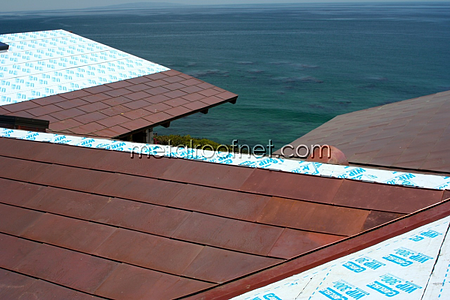 We get questions regularly from folks wanting to know the “best" metal roof or the “best gauge” for a metal roof. Like most things in the building products industry, the answer is a little complex. The truth is that different gauges work best for different metals, profiles and applications. Higher-end projects with a tougher spec and very steep roofs or vertical walls tend to be handled best by the heaviest gauges. Low end, agricultural and exposed fastener projects tend to be thinner.
We get questions regularly from folks wanting to know the “best" metal roof or the “best gauge” for a metal roof. Like most things in the building products industry, the answer is a little complex. The truth is that different gauges work best for different metals, profiles and applications. Higher-end projects with a tougher spec and very steep roofs or vertical walls tend to be handled best by the heaviest gauges. Low end, agricultural and exposed fastener projects tend to be thinner.Keep in mind that the gauge of a metal gets higher as the metal gets thinner, just like sewing needles. A 22 gauge (or 22GA) metal roof might be nearly DOUBLE the thickness of a 29 gauge (29GA) metal roof. To make matters all the more confusing, different metals use different measuring standards. For example, a 24 gauge copper roof panel is a different thickness than a 24 gauge steel roof panel. It's not the easiest thing to understand.
 While there are many manufacturers who do, we don’t normally make any of our profiles in gauges thinner than 26 gauge steel, and most of our products are 24 gauge and heavier. If you’re thinking you just need a “minimum” thickness, then 26 or 28 are the usual choices. If you’re thinking of a better quality installation where long-term appearance and resistance to extreme weather are important, you may want to consider 24 and heavier.
While there are many manufacturers who do, we don’t normally make any of our profiles in gauges thinner than 26 gauge steel, and most of our products are 24 gauge and heavier. If you’re thinking you just need a “minimum” thickness, then 26 or 28 are the usual choices. If you’re thinking of a better quality installation where long-term appearance and resistance to extreme weather are important, you may want to consider 24 and heavier.
To complicate matters further, keep in mind that the profile into which the metal is formed will also affect the suitability of differing metal gauges. To illustrate, take a piece of paper from your printer and hold it between your fingers so it hangs down toward your desk. Now, slowly lower the paper onto the desk and see if it will support itself. Of course, it will just collapse flat onto the table. Now take that same piece of paper and put two or folds down the length of the paper and try the same thing again. Voila - the paper supports itself because you’ve “added” strength by creating the folds. The same concept applies with the sheet metal from which metal roofs are made. The more complex and smaller the shape, the more suitable is a lighter gauge (higher gauge number) metal. Conversely, the fewer the folds and the greater distance between them means that a heavier gauges (lower gauge number) is likely needed.
It’s important to keep all this in mind when comparing metal roof prices, because two roofs that look the same may have completely different thicknesses of metal and almost without exception, given the same metal the heavier gauge material will be stronger, more wind resistant, more resilient to foot traffic, and longer lasting.
If you have a metal roof project upcoming soon and need help specifying and sourcing the best version for your job, we can help. Contact us now and we’ll help you select the best type and gauge of metal roof for your job.



